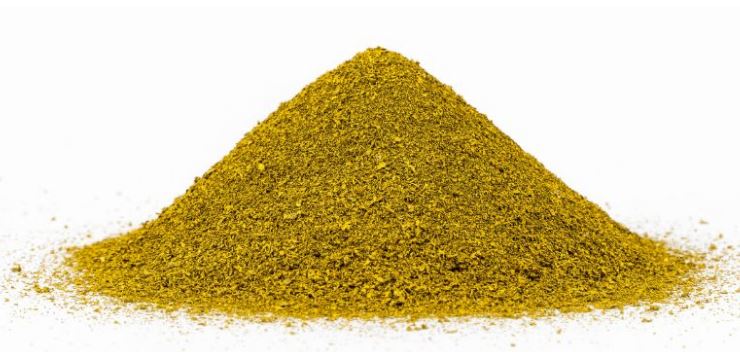Is there KDF in your water filter?

Is there KDF in your water filter?
If you’ve ever shopped for a water filtration system for your home, you’ll know that there are a lot of different systems out there! Starting with the size, you can go from pitcher (1-2 liters) to countertop, to under-counter, to whole-home systems. Then, there are the different methods used to remove different pollutants. Do you want a passive system that just uses gravity, or a system that uses the water pressure to filter, and/or a system that back-flushes contaminants to “clear” the filter?
Many filtration systems use granule-type media, which can be made from activated carbon, catalytic carbon, copper and zinc particles, mixed media like gravel and resin, activated aluminum or manganese dioxide. Copper and zinc particles are what is used in kinetic degradation fluxion (KDF) filters, and depending on the ratio and granule size, KDF media can reduce the levels of water-soluble heavy metals, chlorine, iron, and hydrogen sulfide. It also manages scale, bacteria, and algae in the water. (aquasana.com)
Kinetic degradation fluxion describes how this type of media purifies water. It works in a reduction/oxidation process (also known as “redox”) in which, as the water travels through the media, some molecules gain electrons (reduction) and some molecules lose electrons (oxidation). Although this sounds counter-intuitive, reduction and oxidation refer to the oxidation states of the atoms, where gaining an electron reduces its oxidation state, and losing an electron increases its oxidation state. The oxidation state is the total number of electrons that an atom either gains or loses in order to form a chemical bond with another atom. (Britannica.com) For example, as lead, hydrogen sulfide and chlorine (found in many water supplies) flow through KDF media, some of the harmful contaminants are changed into harmless components, while others are electrochemically bound to the KDF media: (waterfilterguru.com)
Soluble lead cations (positively charged ions) are reduced to insoluble lead atoms, which are electroplated onto the surface of the media (they stay in the filter and can only be removed by recycling it) . (KDF Reticulated Foam)
Dissolved chlorine gas is reduced to water-soluble chloride ions, which pass through with the water as harmless ions that no longer have oxidation properties. The KDF media donates two negatively charged electrons to each molecule of chlorine to reduce it to the lower oxidation state of chloride. (What are KDF Process Media and How Do They Work?) (You can check out an animated visual of the transformation of chlorine gas into chloride ions on the same page!)
Hydrogen sulfide: the copper in the KDF media loses an electron and the sulfur gains an electron, so that copper sulfide and water are formed. The copper sulfide is insoluble in water and can be backwashed off the KDF filter media.
As you can see, this type of filter works on a lot of different contaminants, and even microbes. Copper and zinc are anti-microbial metals. They kill bacteria by direct electrochemical contact and by the flash formation of hydroxyl radicals and hydrogen peroxide, both of which interfere with a microorganism's ability to function. (LennTech.com) Because other filters can be more prone to microbial growth (like activated carbon), using a KDF filter before the carbon filter prolongs the life of the carbon filter.
KDF was invented in 1984 by American Don Heskett “accidentally”. He used a brass ballpoint pen to stir some chemicals and discovered that it removed chlorine from water. He worked on the formulation for several years and patented it, also forming the KDF Fluid Treatment (KDFFT) company. Raw KDF media are produced by KDFFT and sold to many filter manufacturers, to be used alone or layered with other media in their water filtration systems. There are 4 types of media produced: KDF 55 (55% copper and 45% zinc, removes chlorine, heavy metals and bacteria), KDF 85 (85% copper, 15% zinc, best for iron and hydrogen sulfide), KDF Fines (best for chlorine and bacteria removal when incorporated with other media) and KDF Coarse Mesh (for reduction of heavy metals and chlorines). (KDF Products)
The benefits of KDF media are many:
It removes a wide range of contaminants
It is cost effective. KDF media can be replaced every 9-12 months, or if the system allows and you have the means, can be backwashed and reused for over 6 years!
It can be recycled.
It can be used in warmer water than other media (for example in showerheads or dishwasher feed water, whereas activated carbon cannot be used in warm-water applications)
It releases no toxins into the water, so is completely safe. (KDF doesn’t require registration by the EPA as other “pesticides” do, like silver-impregnated carbon.)
Disadvantages include:
Periodic backwashing is required unless you prefer to just replace and recycle the filter. Unfortunately, backwashing must be done at 30 gallons per minute, or the media will not be adequately flushed. In places where water is expensive or scarce, this would be difficult to maintain.
KDF media doesn’t remove organic chemicals such as VOCs, pesticides and herbicides, organic cysts, nitrates, fluoride, viruses, arsenic, and pharmaceuticals, so you’ll have to add another type of filter if these are present. (waterfilterguru.com) It also doesn’t remove chloramines (some water suppliers disinfect with chloramines instead of chlorine, which are very difficult to remove).

Photo from waterfilterguru.com






